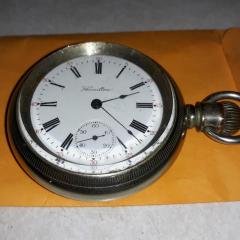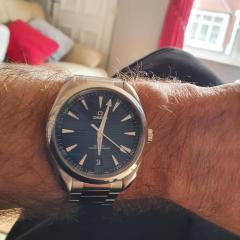-
Similar Content
-
Recently Browsing
- No registered users viewing this page.
-
Topics
-
Posts
-
By RichardHarris123 · Posted
It doesn't matter when you remove them, the ratio of the various wheels are the same, replace them at 12 o'clock. -
By RichardHarris123 · Posted
Not quite true and more is involved but a decent rule of thumb is for every 10 C rise in temperature, the reaction rate doubles. -
Typically for most watch cleaning products and probably all the solvent-based ones elevating the temperature is not desirable. My experiences been if you elevate the temperature it becomes more aggressive at removing tarnish. For which we are time-limited in the cleaning solutions because beyond a certain point when the tarnish is gone it will start dissolving the metal into the solution which will turn a really pretty blue green color. Or simplistically cleaning is good etching the metal is not. I'm currently reading the Elma red specification use sheet and there is zero mention of elevating the temperature? Then based on the recommended cleaning machines one of them are capable of heating the cleaning products at all be used at room temperature. I placed the cleaning machine 70 elevated temperature at all is for the drying cycle.
-
Always best in watch repair to diagnose and determine the problem or problems before implementing a solution. Versus mixing and matching hoping to somehow the problem will go away. Because often times mixing and matching from donor movements will introduce new problems especially if it was a vintage watch. Yes always one of my favorite questions are we fixing a pre-existing condition or are we dealing with a new problem after servicing? Why don't you try putting the fourth wheel and escape wheel in only and see what happens. interesting I wonder if there is a confusion of terminology here? For instance from the Swiss watch repair manual it appears to be end shake of 0.01 might actually be side shake specification? which if you notice changes with the diameter of the pivot typically the only place I've ever seen end shake is with Rolex. Although I'm doing a quick search on something here's something interesting Omega watch and they'll accept a worse case of 0.03 for the balance wheel. Continuing down my search results I see another Omega watch with the same specification. I wonder if that means Omega is making poor quality watches if the tolerance is greater than a what I find interesting is looking at various books on watch repair and digest really isn't any specifications for end shake. Even though when I was in school we spent a lot of time adjusting it don't actually remember what it was at all. Of course some of that's because I typically work on American pocket watches where it cannot be adjusted it is what it is. Which seems to be the philosophy for just about all the watches out there except Rolex. Then even Rolex based on the tolerances of so apparently anything worse than 0.02 mm would be horrible but I'm not finding that specification out there may be you can find be the reference book? then Rolex the only company that seems to really get obsessed about it and actually published numbers based on this discussion apparently sucks for tolerances. Which suggests there must be a confusion over specifications in this discussion
-
You think rodico would grip that much? More than a magnet could?
-






Recommended Posts
Join the conversation
You can post now and register later. If you have an account, sign in now to post with your account.
Note: Your post will require moderator approval before it will be visible.